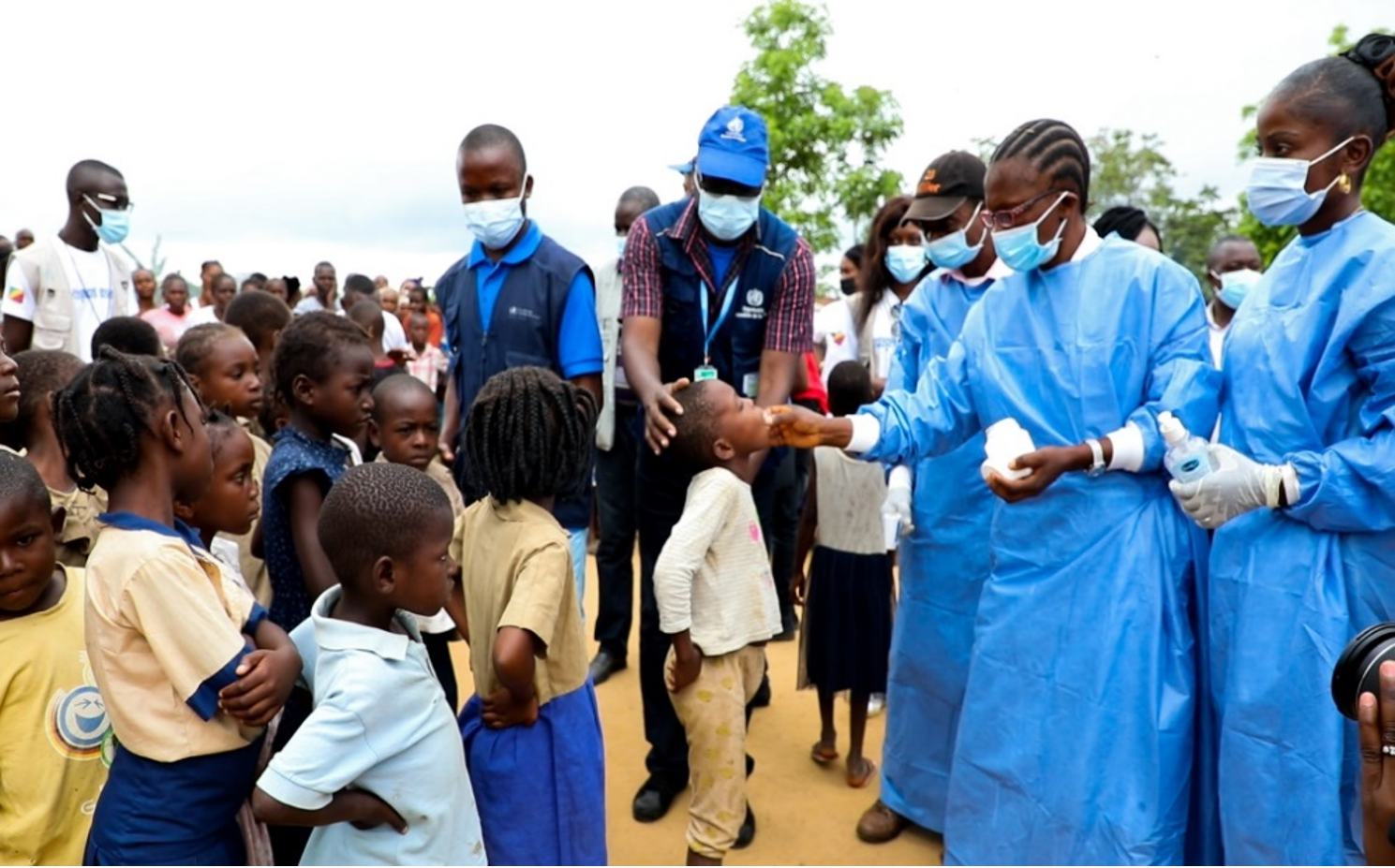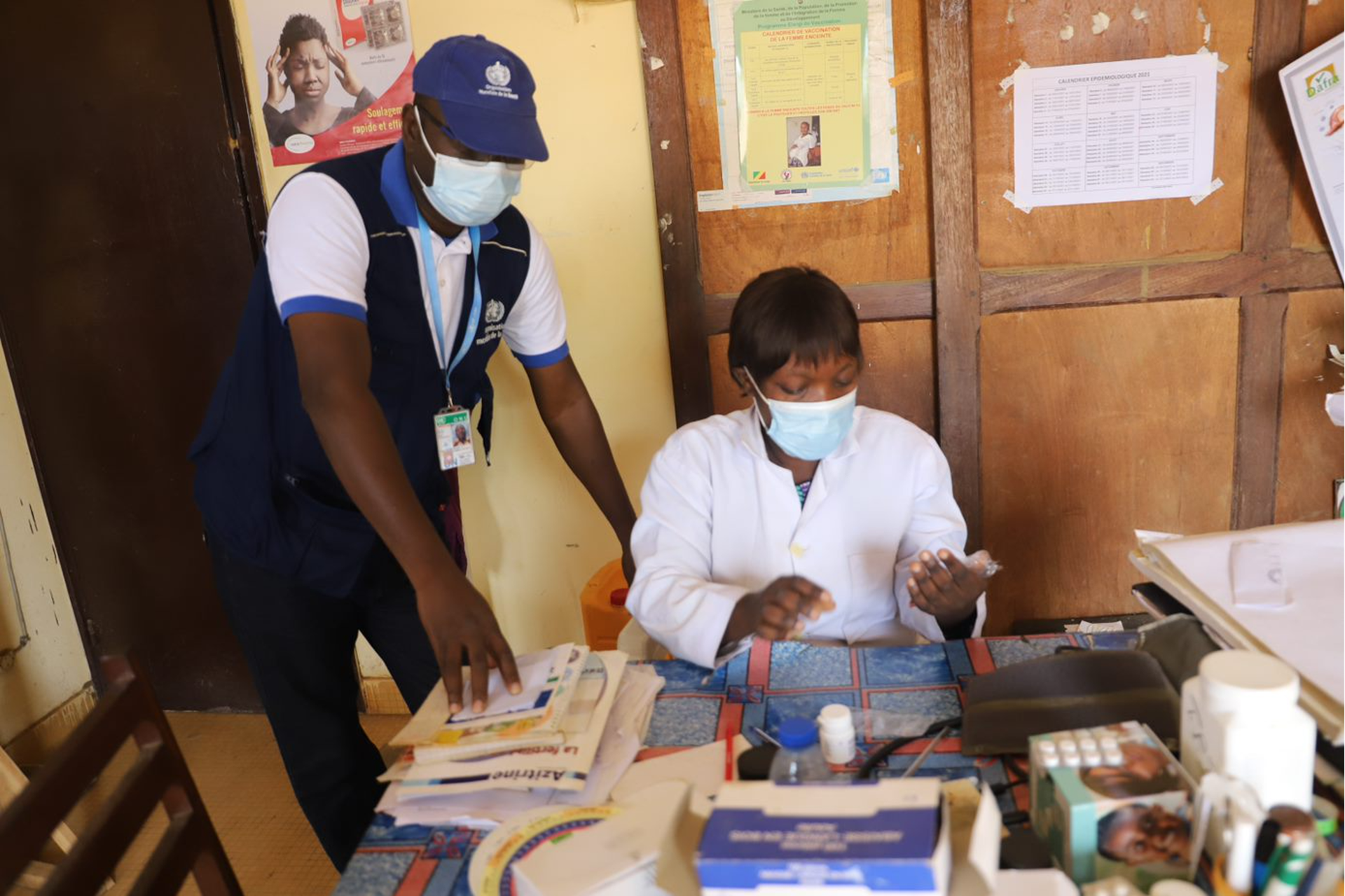/data-and-analytics-(dna)/data-exchange-(dex)/who-presence-in-countries--territories-and-areas.tmb-1920v.jpg?sfvrsn=f1146a2_2)
Strengthening district health systems in Congo for better primary health care
Stronger WHO country presence for a healthier and safer world
Joint Outcome 3.1.
The primary health care approach renewed and strengthened to accelerate universal health coverage
Health service utilization in Congo more than doubled between 2020 and 2024, rising from 8.1% to 18.5%.1 First antenatal care visits also rose from 16% to 43% over the same period.1 This sharp rise in health service utilization results from a World Health Organization (WHO)-supported partnership with the Ministry of Health and Population, focused on strengthening primary health care (PHC), local governance and community engagement. The implementation of a decentralized PHC strategy led to a significant rise in antenatal care completion rates, from 8% to 23%, while also improving access to medicines, infrastructure and services in underserved areas.1 This approach strengthened community confidence, increased the number of patients and enhanced overall service delivery in these regions. The cumulative number of stockout days for 500mg amoxicillin tablets decreased by 97% from 2020 to 2024.1 These achievements demonstrate the positive impact of WHO’s tailored support in addressing public health challenges and supporting the country’s broader health goals.
Congo adopted the WHO Enhanced District-Level Approach as a key pillar of its National Health Policy 2018–2030 and National Health Development Plan 2023-2026. This strategic framework aims to strengthen local health systems by decentralizing services, improving governance and building district-level capacity. Focused on ensuring equitable access to quality care, it emphasizes maternal and child health through targeted technical support and community engagement. The strategy aimed to revitalize 12 of the country’s 52 health districts, with a focus on empowering local health areas to provide essential services, particularly maternal and child health care.
WHO’s interventions included capacity-building, decentralized governance support and technical expertise. WHO deployed two technical experts and a driver to each of the 12 health districts, facilitating targeted training for health workers on integrated management of childhood illnesses, family planning, reproductive health and the use of partograms for childbirth, and management and governance of health facilities.

Ensuring the continuity of essential health services, such as community-level deworming campaigns, has been a priority throughout the COVID-19 response
These efforts enabled health workers to improve maternal care, reduce childbirth complications and enhance neonatal survival rates. The neonatal mortality rate decreased from 27.6 per 1000 live births in 2020 to 20.3 per 1000 live births in 2023.
Furthermore, WHO established local cost-sharing funds, allocating US$ 3.08 million between 2022 and 2024, with 56.2% funding junior consultant salaries, 13.4% supporting procurement of medicines and equipment, and 30.4% financing awareness campaigns and other public health activities. These funds ensured that health facilities remained operational in resource-limited settings, addressing critical operational gaps and preventing service disruptions. Olivier Kitsoki, Chief of the village of Mbamou, highlighted the importance of this support, stating that with WHO’s help, the health centre now had access to essential medicines, equipment and solar panels, leading to better care and improved community health.

WHO also collaborated with three nongovernmental organizations – Médecins d'Afrique, Terre Sans Frontières and the Congolese Red Cross – to raise awareness of antenatal care and maternal health while expanding outreach immunization services. This partnership helped to increase the diphtheria, tetanus and pertussis (DTP3) vaccination rate from 73% in 2020 to 83% in 2024, with 39% of doses administrated through outreach services in 2024.2 Routine immunization campaigns further strengthened child health, as more parents brought their children for vaccinations.
The introduction of 18 key performance indicators allowed WHO and the Ministry of Health and Population to monitor the progress of health facilities in the 12 pilot districts. Over two years, data showed that improvements in governance and infrastructure led to increased service utilization (21 % in the 12 supported districts in 2024 versus 18.5% nationally), more effective resource allocation through decentralized health budget management, and greater community participation and trust, resulting in higher patient attendance.1 This data-driven approach enabled health authorities to pinpoint areas for improvement and implement targeted interventions.
Despite these successes, challenges remain. The extension of the operational strategy to additional districts is hindered by a shortage of qualified human resources and limited financial resources. Furthermore, district health teams face challenges in leadership, organizational capacity and effective service delivery, with administrative inefficiencies slowing decision-making and disrupting continuity of services.
The success of the WHO Enhanced District-Level Approach in Congo demonstrates the power of a tailored, evidence-based strategy in addressing health disparities. While challenges remain, the continued collaboration between WHO and the Ministry of Health and Population, along with the lessons learned, paves the way for the expansion of this approach to all health districts. By reinforcing governance structures, scaling up community engagement and ensuring equitable access to essential services, WHO is contributing to the long-term resilience and sustainability of Congo’s health system, ultimately empowering local communities to manage their own health needs with confidence and efficacy.
